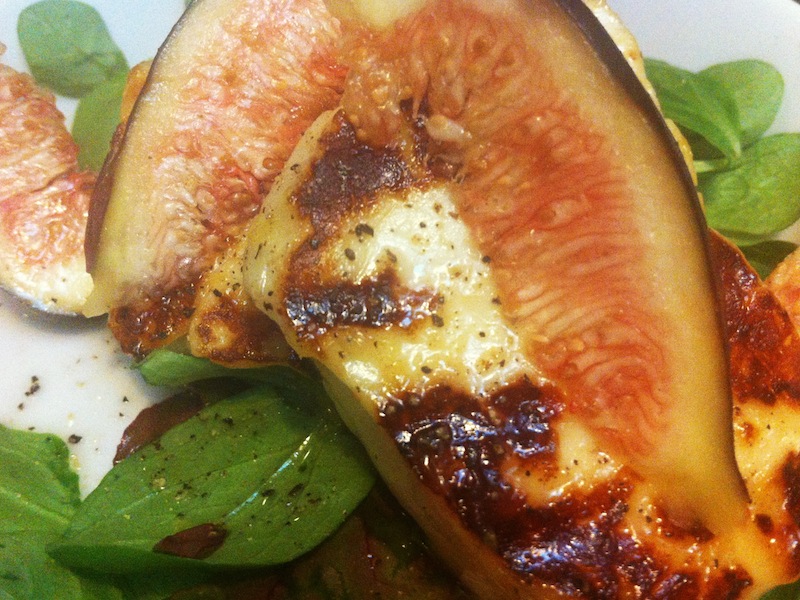According to EyeEm, we've taken significantly fewer selfies in 2015 than 2014. What do you think? And what's been the hot topic?
More EyeEm Festival and Awards tickets cheap to Photocritic readers!
Fancy attending the EyeEm Festival and Awards? Do we have an offer for you!
EyeEm brings new editing and learning tools to its app
It's been a week of updates to our image-sharing programmes on social media. First Facebook introduced an auto-enhance feature, which will apply the filters that its algorithms calculate are most appropriate for your photos. Then Instagram unveiled five new filters, its first in two years. Now it's the turn of EyeEm, which brings a gaggle of new filters, fine-grained control over their application, and a new feature called Open Edit. The theory behind Open Edit is that it lays bare the post-processing path that a photographer followed to create an image, from the original to the final version. Each crop, tweak, and nudge is set out in a timeline that's made visible to the rest of the EyeEm community. If you see something that you like, you can apply the same edits to your own photos with one tap.
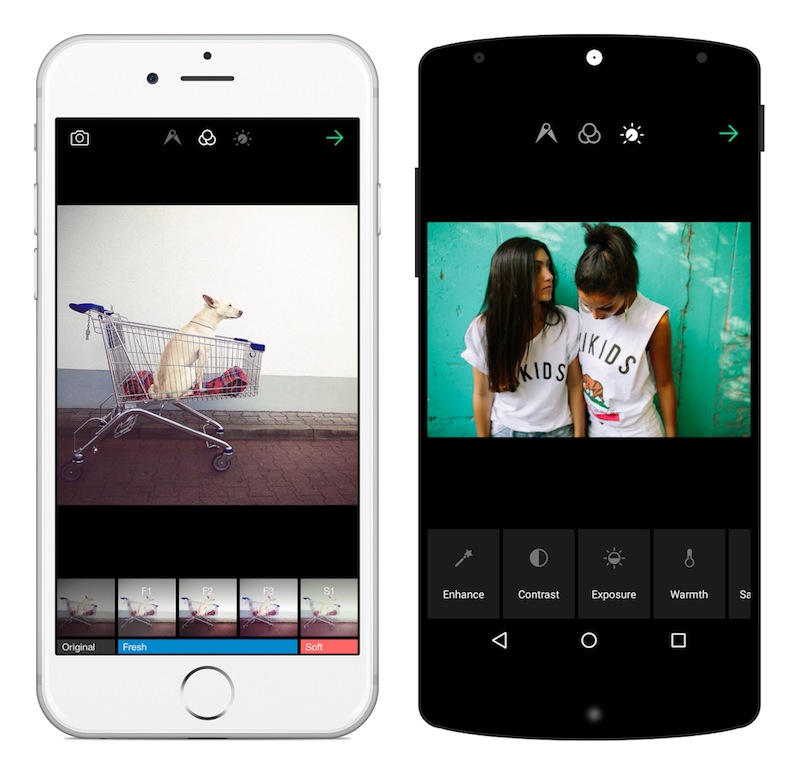
Right now, only certain photographers have the ability to open up their edits to the community, but it's something that will be rolled out to all members in time. The EyeEm team hopes that this open deconstruction of people's photos will lead to a more collaboratively minded community and one that can learn from each other and share their skills.
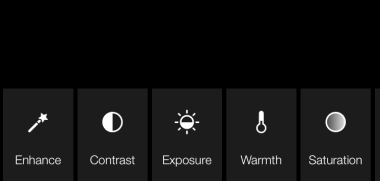
Can I see what EyeEm is trying to accomplish with Open Edit? Yes, definitely. Sometimes I do look at a photo and wonder precisely what sort of magic the photographer wove in order to create that particular effect. But at the same time, I'm not completely sold on it. The mystery and the secret behind someone else's photos are part of their appeal. Having the edits revealed to you can feel a little like the illusion of a magic trick being shattered when you know how it works. My curiosity means that I want to know, but the romantic in me appreciates the mystique.
From a teaching and learning perspective; I love EyeEm's enthusiasm to allow its users to share their knowledge. But I think that by going one step further, they could make this a much more valuable learning tool. How much people will actually learn from being able to see and apply other people's edits to their own photos will depend hugely on how much they're prepared to engage with the editing process and observe the kinds of impact each adjustment makes. Experimentation is such a valuable part of learning that just being able to apply someone else's workflow to your photos feels as if there's an important step in the process that's being skipped. It's not just about the what that you do to your photos, it's also about the why.
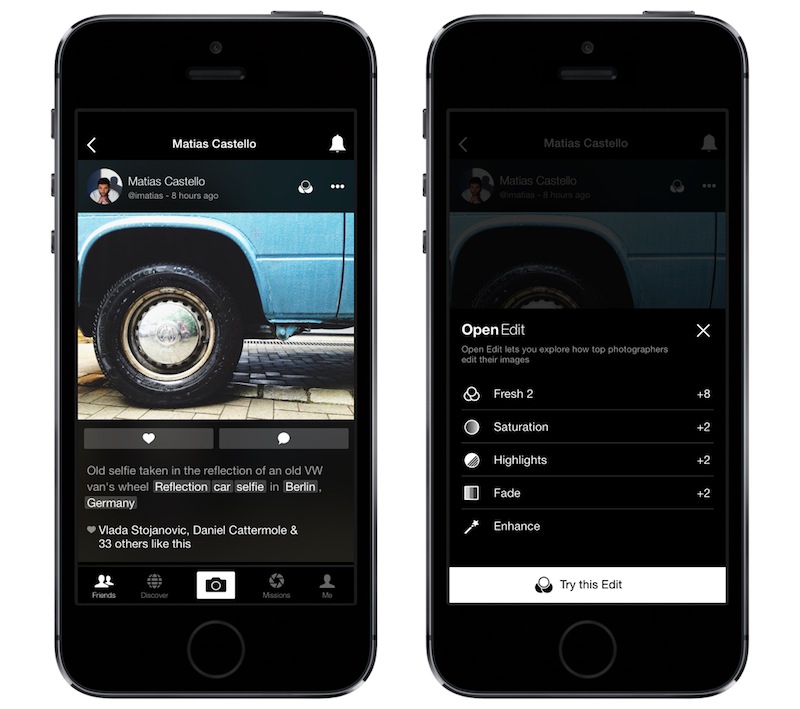
Bring a bit more dialogue to the experience—underpin the action with some explanation—and I think it could really work. Still, lots of people seem to be very excited by EyeEm 5.0, so perhaps I'm the one who's missing the trick here.
Let me know what you think.
You can download EyeEm 5.0 here.
Top 3 edits you should make to every photograph
Earlier this week an infographic design agency, NeoMam Studios, sent us an infographic about 'smoasting' which they'd produced on behalf of print company Photobox. Once I'd got over the shock of awful elision of 'social media' and 'boast' to form the ghastly portmanteau word 'smoast', there was one particular statistic that caught my eye. Take a look at the infographic and guess which it was.
Despite the prevalence of Instagram, the host of editing features that are built into apps such as EyeEm, Facebook, and Twitter, and the plethora of free-to-download editing programmes, only 28% of photos are cropped or styled in some way? Wow! I am surprised. And it's something I think deserves remedying.
While Team Photocritic advocates getting as much right in-camera as possible—you'll certainly not be able to turn a sow's ear into a silk purse—we're not beyond a little post-processing, either. If it's good enough for Cecil Beaton and Horst, it's good enough for us, too. A snip here and a swipe there can elevate an ordinary image into something a bit more special.
This isn't about air-brushing away half of someone's thigh, but about making minor adjustments to three specific areas: the crop, the colour, and the contrast. Here at Photocritic we call them The Three Cs. They're not complicated and they'll make a world of difference.
Crop
However well composed you think your image is, it will almost certainly benefit from having a few pixels shaved off it. It might be a case of reinforcing the rule of thirds, removing a bit of unwanted background that crept into the frame, or getting a bit closer to your subject.
Being a purist, I tend to stick to traditional 4:3 or 3:2 ratios, but don’t feel limited by my prejudices. Select from any of the standard crops, from square to 16:9, or free-style it to adjust the crop any way you like.
At the same time as cropping, make sure to straighten your image, too. Unless you are deliberately tilting the frame for creative reasons, uprights should be upright and horizons should be level. When lines that are expected to be upright or level are wonky, it has an unpleasant impact on our sense of balance. By correcting wonky lines, you'll produce a stronger image.
Colour
Light has a temperature, and depending on the source of the light, or the time of day if it’s the sun, that temperature will vary. When the temperature varies, so does the colour of the light. As a general rule, we don’t notice the variation because our eyes cleverly adjust to the changes. Our cameras on the other hand aren’t quite so clever.
Have you ever noticed how white objects in your photos can show up with blue or yellow casts? That’s because the white balance in your photo was off.
It's a relatively easy correction to make using the 'Warmth' or 'White Balance' function in an editing programme. If you think the whites are looking a bit too blue (or if an image looks a little 'cold' over all), nudge the slider to the right. If the whites are too reddish in tone, or the photo looks a bit warm, slide it to the right. It's a case of trial and error to make the right adjustment, but the more that you practise it, the better you'll understand the shortcomings of your camera and how it reacts to different types of light.
Now if you want to intensify or tone down your colours, you can do so using the saturation slider. I don't recommend bumping up the saturation too much; it can result in a cartoon effect rather than a photo!
Contrast
Contrast is the difference between the dark and light tones in your photos. Images shot on bright sunny days tend to have a lot of contrast, with dark shadows and bright highlights, but those taken in fog won’t have a great deal of tonal variation and will be low contrast. From time to time, you’ll want a low-contrast image, but, generally speaking, your photos can be improved by increasing the contrast a touch. It brings definition and depth to them.
Don’t go overboard, though, as too much of a good thing can turn bad. You’ll find that if you over-cook the contrast you’ll lose too much detail and end up with an ugly image. Subtlety beats brickbats.
If you use Snapseed to make your edits, it's worth getting to know the ambiance slider, too. I've often found that this is a preferable alternative to the contrast slider.
Anything else?
At this point, any other adjustments are gravy. I'm a fan of Snapseed's 'centre focus' options and often apply one of those. You might want to play with a tilt-shift effect. Or there's the waterfall of filters you can try in any programme, but you might find that you prefer your own edits to prefabricated filters, now.
Oh, and don't forget that it all starts with a decent photo, so check out our eight tips for better smartphone photos, too.
Buying and selling mobile imagery - where to go
There have been at least two pieces of news this week featuring companies that sell stock images created on mobile devices: first, EyeEm announced that it has redesigned its Android app and has partnered with Uber to offer new users a free ride to let them go places to take photos; second, Fotolia has also released a new Android app—Fotolia Instant—to complement its iOS version, which allows photographers to upload and sell their mobile images via the stock site. This got me thinking: how many stock agencies are mobile photo-friendly? Or where can you buy images made on mobile devices if that's what you want or need? I did a little digging and a little thinking and put together this list. I've tried to limit it to agencies or sites that are mobile-specific, have dedicated mobile collections, or easy means of uploading mobile images. There are sites such as Picfair that readily accept mobile images, but that's just part of its library.
Mobile-oriented sites

EyeEm
EyeEm is a mobile photography sharing app and community that launched Market, a platform for its members to sell their photos, earlier this year. Invitations are still being issued to join Market, but it's simple enough to request one.
EyeEm Market EyeEm apps: Android; iOS

Foap
Images can only be uploaded to Foap via its app. As well as adding images to the Foap library, image-makers can participate in missions set by brands and agencies searching for more specific content. Foap's terms of use are quite broad, which is worthy of consideration before deciding to sell images there.
Foap website Foap apps: Android, iOS

Scoopshot
Scoopshot expands on Foap's model, with buyers setting tasks for photographers in order to acquire the images they want. If someone sees a news image that they think is vaulable, it can be sent to the news task. Scoopshot doesn't go in for manipulated or filtered images; they prefer fresh and newsworthy content that meets task criteria.
Scoopshot website Scoopshot apps: Android, iOS

Twenty20
We took a look at Twenty20 last year and while we thought its simple pricing structure for selling mobile image files was great, the sales mechanism required some refinement. It's still in the beta stage, but it is there!
Twenty20 website Twenty20 app (iOS only)
Mobile-friendly agencies

Alamy
The more traditional Alamy stock agency has embraced mobile photography and its photographers can use the Stockimo app to upload their mobile images for sale amongst the Alamy library. Buyers can look for mobile images in the dedicated Stockimo collection.
Alamy website Alamy Stockimo collection Alamy Stockimo app (iOS-only)

Depositphotos
Depositphotos is a microstock agency that sells images under royalty free licences. It has a dedicated mobile photography app and collection: Clashot.
Depositphotos Clashot Clashot apps: Android, iOS

Fotolia
Fotolia is home to over 20 million images and it's prepared to add mobile photos into that mix. You can find all its mobile images in its Fotolia Instant collection.
Fotolia website Fotolia Instant collection Fotolia Instant apps: Android, iOS

Getty, including iStock by Getty
When people think of stock agencies, they think of Getty. If they don't think specifically of Getty, they might well think of a Getty subsidiary. Getty photographers are being invited to join Moment, along with the old Flickr collection, while new photographers should be able to join in due course. Whether or not you want to get involved with the Getty licensing machine is another matter.
Getty Images Getty Moment app (iOS-only)
Any other suggestions? Leave them in the comments section!
EyeEm announces its Photography Awards and Festival 2014
New kit. Maybe some cash. Global exhibition. Publication in a 'Best of 2014' photobook. A trip to Berlin. Sound good? They're all prizes that are up for grabs for winners of the EyeEm Global Photography Awards. Starting today, photo-sharing site EyeEm is looking for the best examples of mobile photography to showcase at the Berlin Holzmarkt as part of its photography festival in September this year. There are ten categories into each of which you can submit a maximum of three images.

Open now are the Portraitist, the Illusionist, and the Explorer categories. That round closes on 1 June, to be followed by the Architect, the Street Photographer, and the Illuminator categories, which are open to submissions from 2 June. The final round opens on 16 June and comprises categories the Speedster, the Landscapist, the Storyteller, and the Stylist.
All you have to do is upload your chosen images to EyeEm and tag them with the appropriate category in the Share screen. If you don't already have an EyeEm account, it's free to join.
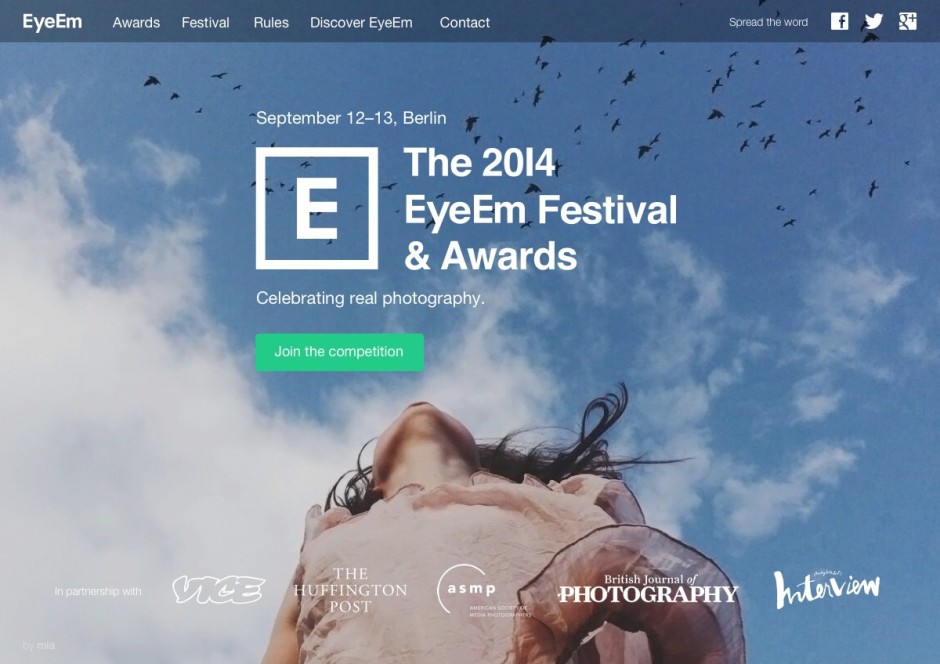
The winners will be chosen by a jury of ten illuminaries from the photographic world, including Anna Dickson, the Huffington Post's Director of Photography, conflict photographer Benjamin Lowy, and Olivier Laurent, who edits TIME's Lightbox magazine. As well as being exhibited at Berlin's Holzmarkt as part of EyeEm's Photography Festival running 12-13 September, winning images will be showcased to the public in London, New York City, San Francisco, Rio de Janeiro, Cape Town, and Tokyo. And the talented entrant named as the EyeEm Photographer of the Year will win a round-trip to Berlin for two, to experience the Festival!
'We’re looking forward to celebrating this new generation of budding photographers, who are defining a new era, with the launch of our Global Photography Festival & Awards,' says Florian Meissner, co-founder and CEO of EyeEm. 'Photography has changed significantly in recent years and at EyeEm we see smartphone photography as a natural evolution of the art form. The creative excellence of our community is the center of EyeEm and the Global Photography Festival & Awards are our way of continuing to support and show the world this incredible talent.'
The EyeEm Photography Festival runs over the 12 and 13 September 2014. It aims to highlight the creative images being made with mobile phones, connect leaders from the photography, devices, and media industry with the next generation of photographers to discuss the state and future of photography, and lay on photowalks, masterclasses, and portfolio reviews for attendees.
All of the details on how to enter the competition and how to book your place at the Festival are available on the EyeEm website. See you there?
Flickr's product chief Markus Spiering joins EyeEm to promote its US development
Markus Spiering, who until Monday was Head of Product at Flickr, has announced he's joined Berlin-based photo-sharing community EyeEm, where he'll be focused on expanding the app into the US market and developing the product team. While Spiering is currently sitting at a desk in Berlin, he will be opening up a San Francisco EyeEm office later this year.
I'm excited to share that today I joined @EyeEm, an amazing and award winning photography startup. http://t.co/fWXz7GgYfs
— Markus Spiering (@spieri) April 3, 2014
Spiering was named as one of Silicon Valley's top 40 players under the age of 40 in 2013, and was seen as instrumental in halting a decline in Flickr's decline after its sale to Yahoo!, so to some leaving a Wall Street-listed company for a Berlin-based start-up might seem like an unusual move. However, it's the challenge of raising EyeEm's US profile to which Spiering is looking forward, having watched the progression of the company since its inception. And EyeEm has been making waves of its own recently, having announced both its Market, where its members can sell their images, as well as a deal that will allow its users to licence their mobile photos through Getty Images.
Florian Meissner, EyeEm's CEO welcomed Spiering to their team: 'We feel honored and are understandably excited to have Markus on our team. We have been consistently impressed with his accomplishments across product and design during his tenure at Flickr. With his vast experience in product, mobile applications and design, as well as his network in North America, Markus will be crucial in realizing EyeEm´s visions about the future of photography.'
EyeEm is going places, and with Spiering on board, it could be getting there a whole lot faster.
EyeEm and Getty Images team up to licence mobile photos
You might be thinking that EyeEm, a mobile photo-sharing app, and Getty Images, the international stock agency, have been in the news enough this week. On Sunday EyeEm announced that it is establishing EyeEm Market, a means for its members to sell their mobile photos and today Getty Images unveiled its new embed feature that will make 35 million images free for use in non-commercial contexts. Now, though, they've teamed up to announce that Getty Images will be making EyeEm images available for licensing across its platforms, including iStock by Getty Images and a bespoke Getty collection. For EyeEm, this places their users' images on a huge stage with millions of potential buyers for royalty-free and rights-managed licences. As Florian Meissner, EyeEm's CEO said: '... now because of our partnership with Getty Images and their extensive distribution network, members of our community will have a great opportunity to earn revenue from their creative work.'
From Getty's perspective, Craig Peters, SVP Content, Getty Images says: 'We are seeing increased demand for fresh, original content that reflects the world as consumers see it, so we are pleased to be partnering with EyeEm to open up this collection to our customers and to provide this talented community of photographers with a new revenue stream.'
Whatever anyone might wish to say about the death of professional photography, Getty perceives that there's a need for mobile images and EyeEm is able to fill it. We can't make it go away by ignoring it, so we might as well embrace it.
It's exciting times for Getty, EyeEm, and mobile photographers.
Photo-sharing app EyeEm launches EyeEm Market - a sales platform for mobile images
Before Instagram hit the app store with its mission to square crop all of our photos and apply one of a dizzying array of filters, there was a Berlin-based start-up called EyeEm that was offering mobile photographers the opportunity to share their images and get to know each other. Instagram might've grabbed the headlines and the Facebook swag, but EyeEm didn't go anywhere. EyeEm quietly grew its network of users to over 10 million and concentrated on helping them to get the most out of their mobile photography with challenges, blog post tutorials, competitions, and allowing mobile photographers to connect with each other. That's paid off and it's allowed EyeEm to start on its next venture: EyeEm Market. It's what it sounds like, a stock house for mobile images on EyeEm. EyeEm users were invited to join by email this morning and the plan is to launch in late spring 2014.
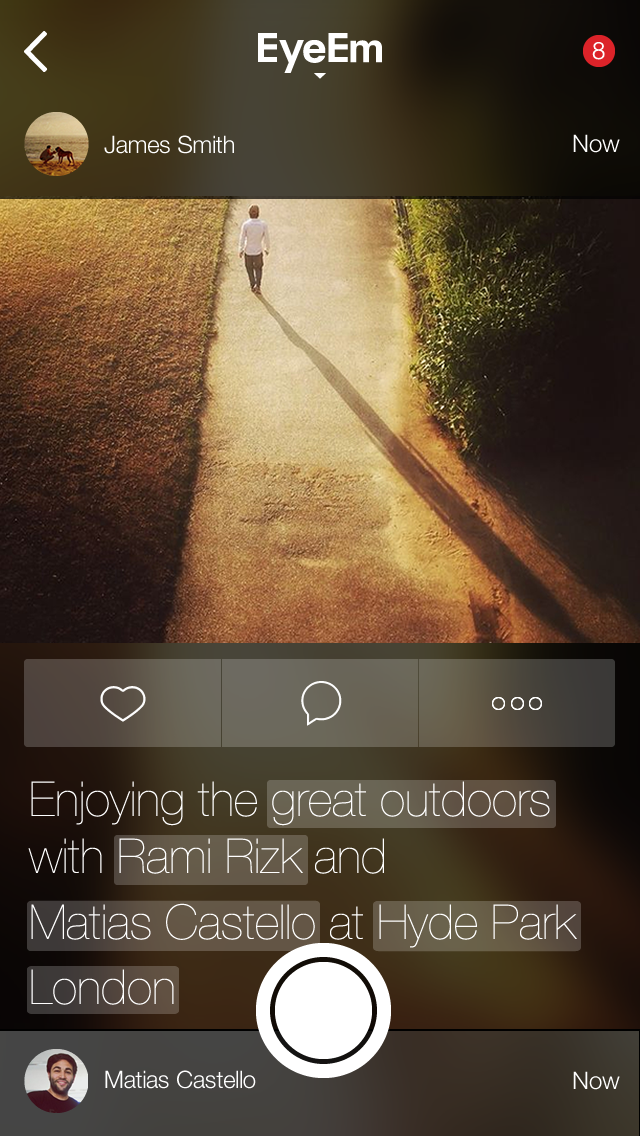
Terms for members have already been set out: 'You always remain the copyright holder of your images and make 50% net revenue from each photo you sell.'
While EyeEm hasn't disclosed the details of the potential buyers it has approached, it's confident that it could be helping its users to take their first steps into a new branch of the professional image market. To that end, it's published some image guidelines for those who are hoping to make some sales. This includes no pets, no plants in pots, and no selfies (unless they're particularly unusual); and to concentrate on the holy trinity: business, health, and family. Not forgetting geo-tagged landscapes and images that can be hard to otherwise get.
Is this another nail in the coffin of professional photography, showing how everyone can now be a photographer and make money from their smartphone cameras? Regard the situation from one stand-point, and yes, that is exactly what EyeEm Market means. But think about it from a slightly different perspective and it demonstrates how the image market place is changing.
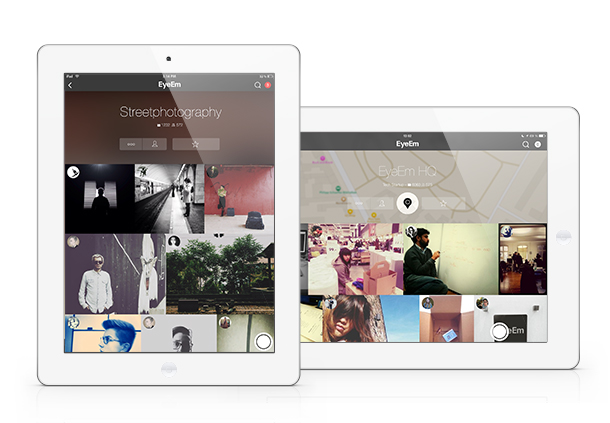
Photo-buyers want mobile images. They're part of the photographic landscape now—part of the zeitgeist, if you will—and we can't put the genie back in the bottle. Instead, we have to embrace it. If we can present photo-buyers with an adequate means of accessing and paying for the images that they want, there's a chance it will drive up quality and ensure that the creative industries are rewarded adequately. It's a damn sight better than images being used without recognition and without recompense because there's no means of buying them.
We can't ignore the market; we have to seize all the opportunties that it presents.
And EyeEm has seized its opportunities and shown that there's more than one way to make a buck from photo-sharing apps.
















